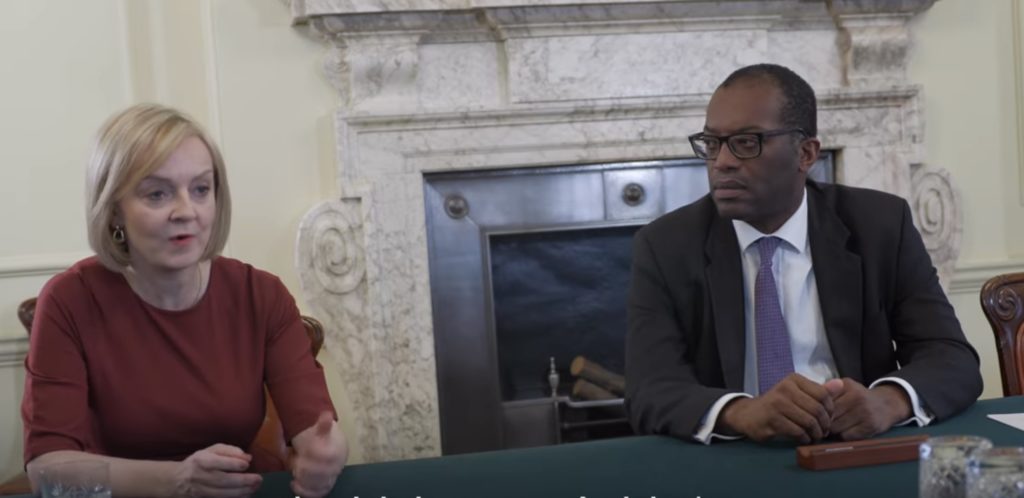We are developing the social individualist meta-context for the future. From the very serious to the extremely frivolous... lets see what is on the mind of the Samizdata people.
Samizdata, derived from Samizdat /n. - a system of clandestine publication of banned literature in the USSR [Russ.,= self-publishing house]
|
My Grandmother used to have a word. It began with “F” but it’s not that “F” word or even the slightly less bad Irish “F” word as popularised by Father Ted. It’s another “F” word but you will search your dictionary in vain to find it. It’s not in mine. In fact, I am far from sure it has ever been written down. If it were written down it would be something like “footer” with the “foo” pronounced like the “Foo” in Foo Fighters not the “foo” in foot. Well, I say that but that’s only about as close as an Englishmen can get. Monaghan pronunciation is not something that I would advise the typical Englishmen, Scotsman or, indeed, Irishman to attempt. Worse still for any cultural appropriators out there, “footer” almost never came without being preceded with another word. The word means “old” but it is pronounced like “aisle” but we can’t use “aisle” because people in Monaghan take their religion seriously. “Isle” also looks silly so I am going to go for “ail”. Anyway, it turned out that a lot of acquaintances of my grandmother turned out to be “ail footers”. In fact, at times it seemed – if my grandmother was anything to go by – that 90% of the population of Monaghan could be so categorized.
However, it turns out that “footer” is not just a noun but a verb. I say that but I’ve only heard that from the lips of one person – not my grandmother – a resident of Armagh who couldn’t pronounce the word but did at least understand it. So, it’s not in common use. But I can’t think of a better word in light of the mini-Budget announced on Friday. Whatever Liz Truss may be or may do she is not a “footer” and she is not “footering about”.
For Liz Truss to not be a “footer” is an achievement in itself. The last 12 years of Conservative or mainly Conservative rule has been government of Footers, by Footers, for Footers. Liz Truss herself has spent the last ten years as a Cabinet minister. That means 10 years defending policy most of which she must have thought was nonsense. How do you do that without the steady erosion of your sense of right and wrong? How do you do that without losing all sense of urgency? Anyway, she has and the speed at which non-footerish announcements on taxes, regulations, energy and Ukraine are coming out of government is astonishing. I have been burnt so many times by politicians that I have become reluctant to give them my whole-hearted support. I am not yet ready to do that in the case of Liz Truss but this is an extremely promising start.
 There is little about Liz Truss’s appearance or demeanour to suggest (to me at least) a Thatcher-like determination. From Heaver News.
Heaven forbid trying increase gas supplies in a time of gas shortage. Amazing how many greens seem to have a convergence of interests with nice Mr. Putin. Funny that.
– Perry de Havilland on the opposition to fracking in UK from the usual suspects.
From the White House website:
President Biden often summarizes his vision for America in one word: Possibilities. A “digital dollar” may seem far-fetched, but modern technology could make it a real possibility.
A United States central bank digital currency (CBDC) would be a digital form of the U.S. dollar. While the U.S. has not yet decided whether it will pursue a CBDC, the U.S. has been closely examining the implications of, and options for, issuing a CBDC. If the U.S. pursued a CBDC, there could be many possible benefits, such as facilitating efficient and low-cost transactions, fostering greater access to the financial system, boosting economic growth, and supporting the continued centrality of the U.S. within the international financial system. However, a U.S. CBDC could also introduce a variety of risks, as it might affect everything ranging from the stability of the financial system to the protection of sensitive data.
To be fair, these remarks by Dr. Alondra Nelson, head of the White House Office of Science and Technology Policy, Alexander Macgillivray, Principal Deputy United States Chief Technology Officer, and Nik Marda, Policy Advisor do acknowledge the existence of risks:
For example, these objectives state that a U.S. CBDC system should expand equitable access to the financial system, preserve the role of physical cash, and only collect data that is strictly necessary.
Given the record of the FBI, the CIA and the NSA, I would put very little faith in their definition of “strictly necessary” as a shield against the US government spying on its citizens.
“German Galushchenko, the minister of energy, told the YES conference that Ukraine could potentially supply two gigawatts of power to the EU right now, but was being prevented from doing so by bureaucratic obstacles on the European side”
– Niall Ferguson (not that one, the other one).
CEOs at prominent firms such as Apple, Tesla and Goldman Sachs have required employees to return to the office, curbing the working from home trend that got going at the start of the pandemic.
One point that jumps out at me is how this shows that skilled employees have a lot of market muscle today – firms need to persuade them to do certain things and don’t have all the power.
Consider: Labour is not homogenous and takes time to replace. We have seen a dramatic example of this in the airline sector, where thousands of staff, such as those working in security and baggage handling, were let go, creating a bottleneck problem when restrictions ended. Airlines are now scrambling to get people re-hired, but that is not easy as employees and contractors must go through security vetting. Hence the thousands of cancelled and rescheduled flights that have been a feature of the holiday travelling season.
What all this shows is how flawed Karl Marx was in his claim that capitalists have the superior bargaining power over “workers” and that business owners hope to create a “reserve army” of the unemployed who will put downward pressure on wages, hence creating the “surplus” that becomes profit.
Among the many things wrong with Marx’s idea is that claim that the majority of the risks and uncertainties are on the employees’ side. Hiring and retaining labour, including skilled labour, is not straightforward. There are search costs to consider in hiring, and employers know that it is often better to retain a worker, even if they could get someone a bit cheaper, than have the cost and time of hiring another. Also, a worker is paid a wage/salary, at least initially, whether a firm has made a profit or not, and that is a risk the employer has to bear (otherwise why else do firms have revolving credit facilities to manage cashflow?) Further, all workers are to some extent also “capitalists” – they have built skills and character (punctuality, agreeableness, ability to follow rules, get on with others and serve clients, etc) that take time and effort to acquire. A plumber, software programmer or security manager have capital sitting in their heads, and when a firm hires such a person, it is renting that capital.
There are of course of lots of reasons why Marx’s description of labour/capital relations is wrong and simplistic (example: his insertion of the idea of “socially necessary labour” begs the question of how one knows what that is, and it turns out that SNL is revealed by the interplay of prices in a market, rendering his idea circular). But the current working from home/office argument seems to bring home a particular point, which is that those supposedly evil capitalists don’t have all the power, and in many cases, have far less than even they might have hoped for.
Addendum: Thomas Sowell’s critique of Marxism remains one of the most succinct and effective that I have read. Also, there is a segment in Robert Nozick’s Anarchy, State and Utopia where he demolishes the “exploitation” theory very effectively. Another good treatment of the issue is by Kevin McFarlane, an engineer and libertarian.
…a free market in money then we wouldn’t have inflation. (Please note that with zero inflation prices can still move relative to one another.)
…a free market in housing then we wouldn’t have a housing crisis.
…a free market in healthcare then queues for cancer care would be much shorter, perhaps even non-existent.
…a free market in energy then – all things being equal – things would be looking a lot better for this winter. Of course, if we had a genuine free market in energy – all things not being equal – then polluters would be compensating their victims. This could lead to some very odd outcomes and I wouldn’t like to predict what they would be.
…a free market in education there would be a lot less wokeness and a lot less student debt.
…a free market in social media we would have pile-ons, doxing and cancel culture.
(I focus on the UK here in this brief commentary; needless to say, readers in the US and other countries such as Singapore or parts of Europe will have plenty to add. I remember reading about how water rights and arguments over it has been a huge issue in the US Southwest, for example, for decades. Chinatown, the old Jack Nicholson film, is a favourite of mine.)
There are restrictions on water use in the UK at the moment, which has been through one of those long, hot summers that are great for a few weeks as people get out the barbecues and soak up the Vitamin D, but become a pain when folk have to work when the country cannot seem to manage air conditioning. And then the “green and pleasant land” goes the colour of café au lait. There are issues about whether, if such weather remains a regular feature, that certain crops such as wheat have to be irrigated. (Much wheat is grown in East Anglia, where my Dad had a farm and is the driest part of the UK, being on the eastern side of the country.)
From a free marketeer’s point of view, the water business is a bit of a challenge. The system of pipes, reservoirs and meters put in place can, to some extent, have business features and use the price mechanism to allocate resources (water meters, for example), but it is not all that feasible or politically easy to have different water firms competing to supply the stuff over rival pipes, dig out rival reservoirs, or desalination plants, etc. Digging a reservoir typically will require a compulsory purchase power, or what in the US is called Eminent Domain, and that is not something that is easily granted to a wide variety of suppliers of water.
So in the eyes of many, much of today’s water sector is what economists call a ”natural monopoly”. (The competitive bits might include supplies of bottled drinking water, home equipment for filtering water, private water storage, etc.)
Monopolies tend to be abused by those running them unless there is a realistic prospect of competition to keep people honest. The cluster of firms running the water organisations in the UK, such as Thames Water, are in some cases listed firms and pay a dividend, or they are owned by other listed firms (sometimes classed by asset managers as “infrastructure”). The salaries of their senior executives are the subject of much angst in the press, including the supposedly pro-capitalist ends of it, never mind those reflexively hostile to business. Because of the natural monopoly aspects of these firms, they are regulated by a quango called The Water Services Regulation Authority, which sets certain standards including pricing. From time to time there are calls for water utilities to be renationalised, although it is worth noting that in the last big drought in the UK of 1976, utilities were state owned, and that certainly did not prevent all kinds of water bans and restrictions. (Here is a paper written 21 years ago from the Institute of Economic Affairs about water utilities and competition.)
So what should classical liberals and libertarians think about this? Are there examples from around the world on how to inject genuine competition into a field deemed always to be a monopoly, or should water supply be a sort of minimal state function like law and order, akin to how one might think about the cardiovascular system of the body? Would an anarcho-capitalist order be able to handle these questions (rival agencies running packages for water/power, etc with different pricing regimes all competing against one another?)
It does seem to me that there should be more opportunity for innovation and change that could put water companies under healthy pressure. For example, building several desalination plants (they don’t have to be even very big – nuclear-powered submarines use them) might be an idea for a commercial provider who could offer to supply cheaper water into the system, but I am guessing the price incentives would need to be big enough to justify the costs, depending on how expensive a plant is or whether they can be build in sufficient amounts to achieve economies of scale.) There is even a specialist market in small desalination/reverse osmosis tech for producing water for folk such as sailors, etc. (See an example here.) And see here for an interesting article from the Massachusetts Institute of Technology.
One could, I suppose, have a system where water suppliers compete to supply water into a series of reservoir hubs for an agreed amount; the water could even be shipped or piped from wetter parts of the UK such as Wales and Scotland, and be a nice source of revenue for those places. Maybe it is time for Scottish nationalists to spend more time figuring out how to get rich by using this resource instead of bellyaching about the evil English. Also, very large users of water – agri-businesses irrigating land, or industrial users – have the bargaining power to negotiate prices and hence could even build mini-reservoirs of their own, assuming governments allowed it.
There may be plenty of other ways to think about the limits, but also the potential, of making the business of water more competitive and businesslike. Because it strikes me that if those arguments aren’t made in a constructive way, the usual calls for State control will be ever louder. The past few years, such as over COVID-19, have taught us, surely, that fear of bad things happening plays all too often in one, clunky direction.
(I haven’t mentioned global warming yet, but while that issue has obviously been raised a lot by those who extrapolate trends from a period of weather, I think the issues here aren’t dependent on whether man-made global warming is true or not, or bad or not. For once, I am parking that subject to the side of the road.)
I have no sympathy for these idiots.
we are demanding a reduction of energy bills to an affordable level. Our leverage is that we will gather a million people to pledge not to pay if the government goes ahead with another massive hike on October 1st
Imagine finding yourself living a comfortable life in the twenty first century, surrounded by plentiful food and energy. Imagine looking at the world and thinking that all of this is thanks to the government. The government! Imagine voting, repeatedly, thinking that it is the government who are most able to ensure your life remains comfortable. Sure, nearly every politician has turned out to be corrupt and useless. Nearly every promise has been broken. But this time we will vote for the right people and it will be better. And we definitely do not need to put up with any down-sides. We do not need to build nasty nuclear power stations or drill for smelly gas. We can just keep buying it from other countries and building windmills.
Imagine not noticing the invention, the industry, the toil of others of past ages to bring us to the point that machinery can feed us, the effort and ingenuity that brings us energy.
And when something goes wrong and there suddenly is not as much so readily available, why, we can just vote ourselves more cheap energy. And if they will not let us vote for cheap energy, we will just refuse to pay. Because we are citizens of the twenty first century and we are used to comfort and we deserve to have it! And it is just not fair if it is suddenly more expensive! The government must not allow prices to go up. Other people must keep feeding cheap gas into my house. Or else!
Sheer, fucking hubris.
One big problem of Brexit is that it’s created a big category error in everyone’s thinking. Problems are categorised as being caused by Brexit instead of by trade regulation.
Nobody notices the EU could just choose not to restrict food imports from the UK. Or vice versa. French people’s inability to buy British meringues is unseen.
Because we use egg, there was a real problem with ‘do we need to get a vet in to certify the egg?’ and we were being pushed from pillar to post from [the Department for Environment, Food & Rural Affairs] and the Department for Trade and it was so difficult to understand.
Is there really any need to check food at the border? Might one not reasonably assume that British food legally sold in Britain is safe? Stopping diseases at borders might be somewhat useful but this is something that can be activated after the detection of a specific problem, just as it presumably is within the EU.
The real reason for these regulations is to make work for regulators.
“When did you hear any public figure extol cheap energy as an agent of poverty alleviation? When did you hear any historian describe how coal, and later oil, liberated the mass of humanity from back-breaking drudgery and led to the elimination of slavery? For 10,000 years, the primary source of energy was human muscle-power, and emperors on every continent found ways to harness and exploit their fellows. But why bother with slaves when you can use a barrel of sticky black stuff to do the work of a hundred men – and without needing to be fed or housed? The reason no one says these things (other than Matt Ridley) is to be blunt, that it is unfashionable. The high-status view is that we are brutalising Gaia, that politicians are in hock to Big Oil, and that we all ought to learn to get by with less – a view that is especially easy to take if you spend the lockdown being paid to stay in your garden, and have no desire to go back to commuting.”
– Dan Hannan
I remember reading TS Ashton’s book on the Industrial Revolution many years ago as an undergraduate, and it was emphatic that no serious civilisation lifts out of poverty without an Industrial Revolution. Even Karl Marx, wrong as he was on so much around economics, gave grudging respect to the IR in his Communist Manifesto. (Old Soviet propaganda posters would show pictures of rosy-cheeked workers in front of factories belching out smoke.)
This is savage and just from the Spectator:
There’s a rich irony in HSBC now refusing to collect data on its customers, given its involvement in abetting the Chinese government’s crackdown on Hong Kong. HSBC not only publicly backed the draconian National Security Law but also froze the bank accounts of prominent pro-democracy activists in exile at the behest of Beijing, something that obviously involved keeping tabs on the troublemakers. Its chief executive, Noel Quinn bleated that ‘I can’t cherry-pick which laws to follow’; given the law claimed universal jurisdiction, it doesn’t exactly suggest pro Hong Kong democrats in London are safe with the bank, non-binary or not.
Read the whole thing, as they say at Instapundit. I noticed, for example, that every time I fly into or out of a major airport such as Heathrow, Geneva or Gatwick, the jetway bridge has a big fat HSBC logo on it. And on the inside, there are lots of HSBC messages about “sustainability”, about how we are all in “one world”, and all the other bland cant of modern corporate messaging.(None of that vulgar stuff about creating wealth and making a profit. Goodness me, no.) It is rather like the kind of “lounge” or “Muzak” music one gets in elevators and hotel lounges. After a while one tunes it out.
I wonder how long this situation can persist. HSBC now has Chinese Communist Party folk sitting on its China subsidiary. (HSBC denies these folk have any influence. If so, what are they doing? Drinking tea?)
Given the various frictions and problems between the West and China, I don’t see this as sustainable in a sense rather different from how the Greens use that word. Anyone doing business with HSBC must start to wonder if it really is an autonomous commercial enterprise. Rather, a large part of it would appear to be little more than a Beijing front organisation. HSBC is listed on the London Stock Exchange and its HQ is in London. At some point, if there was, for example, a Chinese invasion of Taiwan, and sanctions and all the rest had to be imposed, that would put HSBC in an invidious position. The UK may even insist that HSBC spins off its mainland China business if it wanted to retain its UK banking licence.
“Sure, organic agriculture is sustainable: it sustains poverty and malnutrition.”
Taken from an article by Matt Ridley, on the self-imposed agricultural disaster of Sri Lanka, caused by the government’s suppression of artificial fertilisers in preference for more “organic” methods.
As Ridley concludes in his article: “If the world abandoned nitrogen fertiliser that was fixed in factories, the impact on human living standards would be catastrophic, but so would the impact on nature. Given that half the nitrogen atoms in the average person’s body were fixed in an ammonia factory rather than a plant, to feed eight billion people with organic methods we would need to put more than twice as much land under the plough and the cow. That would consign most of the world’s wetlands, nature reserves and forests to oblivion.”
In Holland, farmers have been protesting the Dutch government’s plans to cut nitrogen emissions.
It seems that “educated” and “well-informed” people the world over want to reverse a truly “Green revolution”, driven by new fertilisers, seed varieties and agricultural technology. And all the while doing so when Ukraine, one of the world’s most important exporters of wheat, sunflower oil and other important products, is being attacked.
I am searching in vain to find much reflection about any of this from those folk running to be next leader of the Conservative Party.
|
Who Are We? The Samizdata people are a bunch of sinister and heavily armed globalist illuminati who seek to infect the entire world with the values of personal liberty and several property. Amongst our many crimes is a sense of humour and the intermittent use of British spelling.
We are also a varied group made up of social individualists, classical liberals, whigs, libertarians, extropians, futurists, ‘Porcupines’, Karl Popper fetishists, recovering neo-conservatives, crazed Ayn Rand worshipers, over-caffeinated Virginia Postrel devotees, witty Frédéric Bastiat wannabes, cypherpunks, minarchists, kritarchists and wild-eyed anarcho-capitalists from Britain, North America, Australia and Europe.
|




